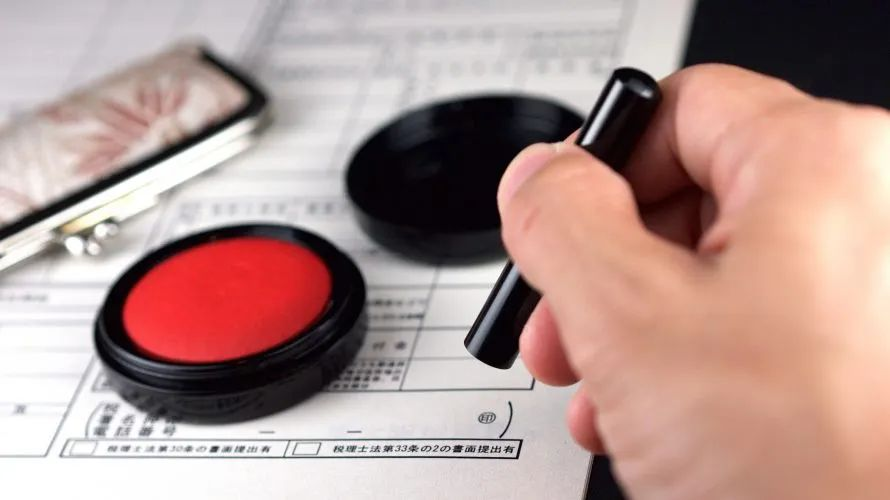One of my initial confusions upon starting my journey as a student in Japan was the widespread use of seals, or “hanko,” as opposed to signatures. During the process of enrolling in school, I was informed that a seal was mandatory for documentation, marking the beginning of an intriguing cultural exploration. This requirement piqued my curiosity profoundly: why was the use of a seal so crucial? This curiosity was not just about understanding a practical tool but delving into a deeper understanding of Japanese culture.
Venturing into a nearby stationary store, I was astounded by the vast array of seals on display — from simple surname seals to intricate custom designs, showcasing the societal demand and deep-rooted affection for seals in Japan. After purchasing a seal engraved with the character “Shi” (my name, meaning stone) I began to grasp the notion that in Japan, a seal is more than just an identifier; it symbolizes one’s identity and carries significant legal and social importance.

As I immersed myself deeper into Japanese life, I encountered the use of seals in various contexts, from opening bank accounts to signing contracts, highlighting their central role in Japanese society. Especially after commissioning an ivory seal for 15,000 yen (about 750 RMB), my appreciation for the value and significance of seals deepened. This was not just because of the seal’s material value but because it represented my legal standing and social identity in this country.
Through further research, I discovered the profound historical roots of Japan’s seal system, closely linked to the ancient Chinese culture of seals. As early as the Han Dynasty, Japan paid tribute to China, and the Chinese emperor had bestowed upon Japan the seal of “King of Han.” By the Tang Dynasty, Japan had adopted China’s official seal system, although at that time, only the emperor, nobility, and samurai were entitled to use seals, not the common people.
By the sixth year of the Meiji era (1873), Japan enacted a law requiring every citizen to possess their own seal for signing documents.
Thus, October 1st, the day the seal system was established, became “Seal Day” in Japan, a day when seal appreciation ceremonies are held in related shrines to give thanks for the seals’ companionship through the tumults of life.
The Japanese seal system is categorized into :
“Jitsuin” (registered seal),
“Ginkoin” (bank seal),
“Mitomein” (recognition seal),

each with its specific use and importance. The detail of this system not only standardizes the use of seals but also reinforces the sense of responsibility and credibility in personal and business interactions. Moreover, the classification and use of corporate seals clearly define the legal identity and operational authority of companies.
Although the digital transformation of modern society challenges the traditional seal system, in Japan, the cultural value and legal status of seals are still widely recognized and respected. Seals are more than just physical tools; they are cultural symbols representing Japanese society’s commitment to tradition and standards.
So, what do the seals of Japanese enterprises and institutions look like?
The seals of Japanese enterprises and institutions can be divided into three types:
First, there are “Kakuin” seals.
“Kakuin” is a square seal and serves as the representative seal of a company or organization, equivalent to the official seal of a company or institution.

Secondly, there are “Daihyouin” seals.
“Daihyouin” is the seal of the “representative director” and serves as the corporate seal of companies and institutions. For example, it is used for signing important contracts involving money or legal documents signed in the name of the company’s “representative director”. Most of the time, the “Daihyouin” is required.
The “Daihyouin” is a round seal and must also be registered with government authorities to have legal effect. However, according to the Japanese seal system, while an individual’s “Shiin” (personal seal) must be registered at the municipal government’s certificate service center, a company’s “Daihyouin” must be registered at the government’s legal affairs bureau. When necessary, the legal affairs bureau also issues a “Certificate of Seal Impression.”
Thirdly, there are “Ginkouin” seals.
The “Ginkouin” seals of companies and institutions are also round and are mainly used for opening accounts and conducting banking transactions.
However, unlike personal seals, the “Daihyouin” and “Ginkouin” of a company or institution must be distinct and separate seals.
Over a decade ago, South Korea and the Taiwanese region of China abolished the “personal seal system,” making Japan the only country in the world to maintain the “universal seal system,” as the Western signature system is not recognized.
Therefore, despite efforts by the Japanese government to promote electronic seals with the advent of the digitalization of documents, society seems to ignore the government’s call and continues to value the traditional physical seal. They view the seal as a cultural and traditional artifact that should not be discarded.
Compared to the Western system of signatures, Japan’s “seal system” allows individuals to delegate legal matters to agents without needing to be present themselves. They can simply provide their seal certificate and power of attorney to authorize representatives to handle legal affairs. This is also a benefit of the Japanese seal system.
Therefore, for friends planning to study, work, or live in Japan, it’s advisable to prepare a simple seal before arriving. Alternatively, they can ask friends in Japan to assist in obtaining an official personal seal, ensuring they have one upon arrival and avoiding any inconvenience.

